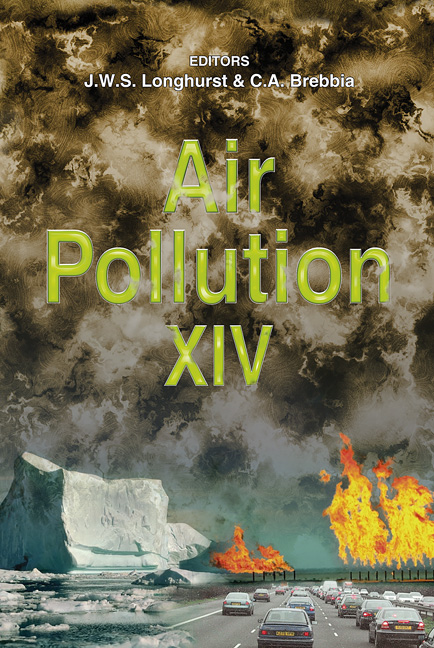Modelling The Concentrations Of PM10 At A Roadside Site Using Data From A Nearby Background Site
Price
Free (open access)
Transaction
Volume
86
Pages
9
Published
2006
Size
604 kb
Paper DOI
10.2495/AIR060231
Copyright
WIT Press
Author(s)
D. Muir & J. W. S. Longhurst
Abstract
It has been demonstrated elsewhere that it is possible to identify the most probable source of PM10 during air pollution episodes by examining the relationships between the additional amounts of PM10 and other, gaseous, pollutants. The work described here develops this to model the concentrations of PM10 at the Glasgow Kerbside monitoring site using a combination of nitric oxide data from that site and data for ozone, nitrogen dioxide, sulphur dioxide and PM10 from the nearby Glasgow Centre monitoring site. Keywords: PM10, Air Quality management, road traffic, modelling. 1 Introduction Part IV of the Environment Act, 1995, requires Local Authorities in the UK to review and assess air quality in their administrative areas at regular intervals as part of the process of Local Air Quality Management (LAQM). For this purpose objectives have been set for concentrations of seven pollutants to be achieved by a number of target dates. If this process indicates that one or more of these will not be met then the authority must declare an Air Quality Management Area (AQMA) and develop an Air Quality Action Plan (AQAP) to introduce local measures, over and above proposed national measures, to attempt to meet the objectives. The objectives are based on European Air Quality Limit Values (where formulated) supplemented by recommendations from the UK Expert Panel on Air Quality Standards (EPAQS). The pollutants are benzene, 1,3 butadiene, carbon monoxide, lead, nitrogen dioxide, particles measured as PM10
Keywords
PM10, Air Quality management, road traffic, modelling.





